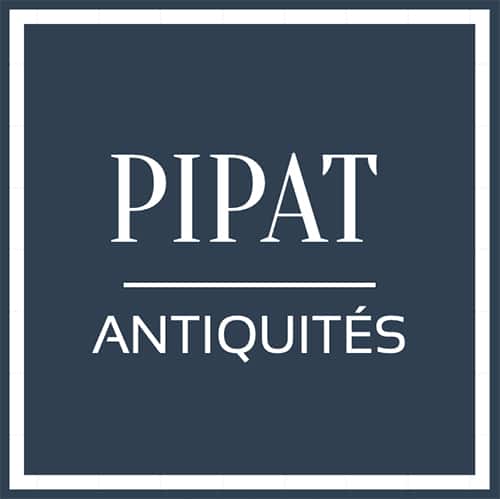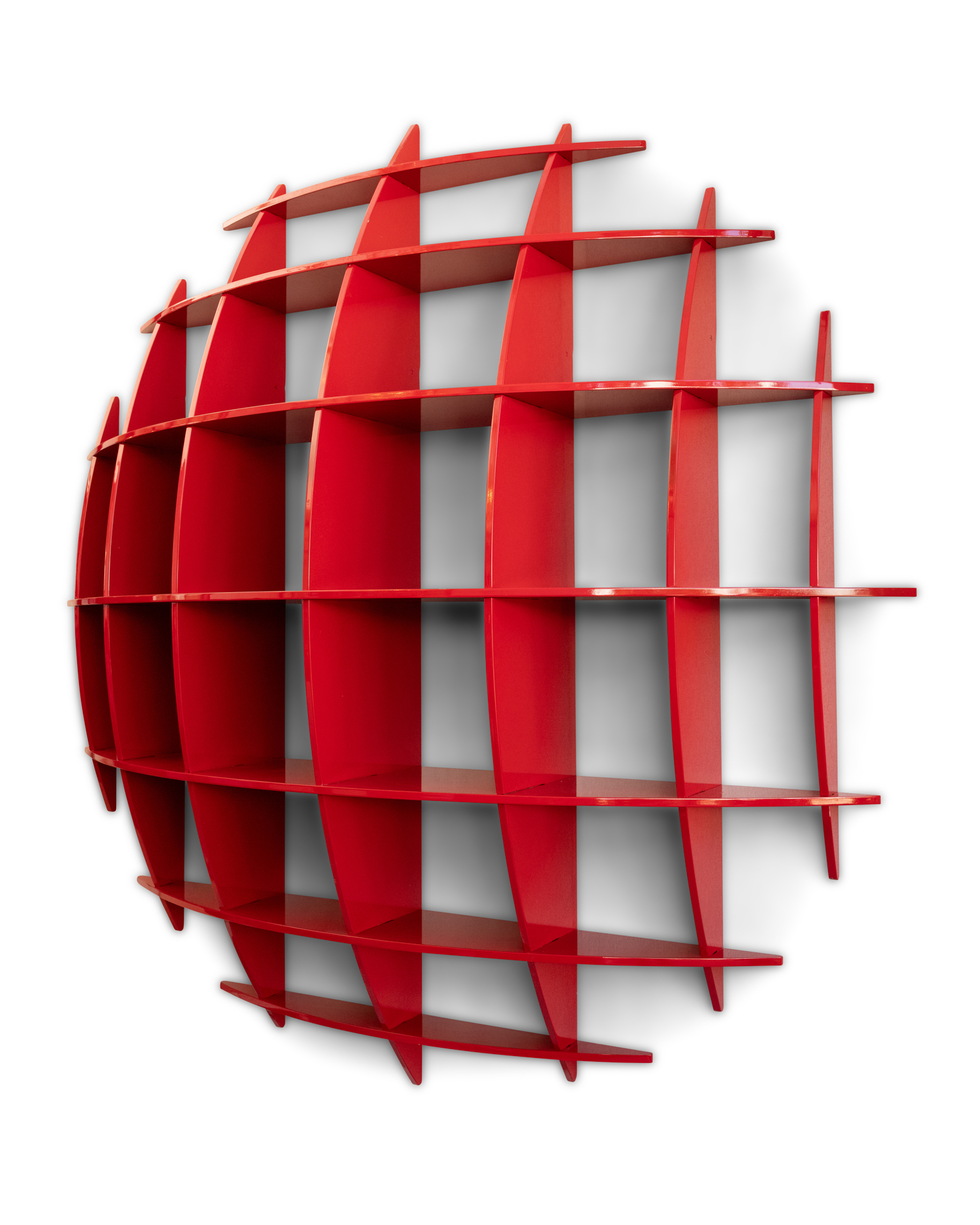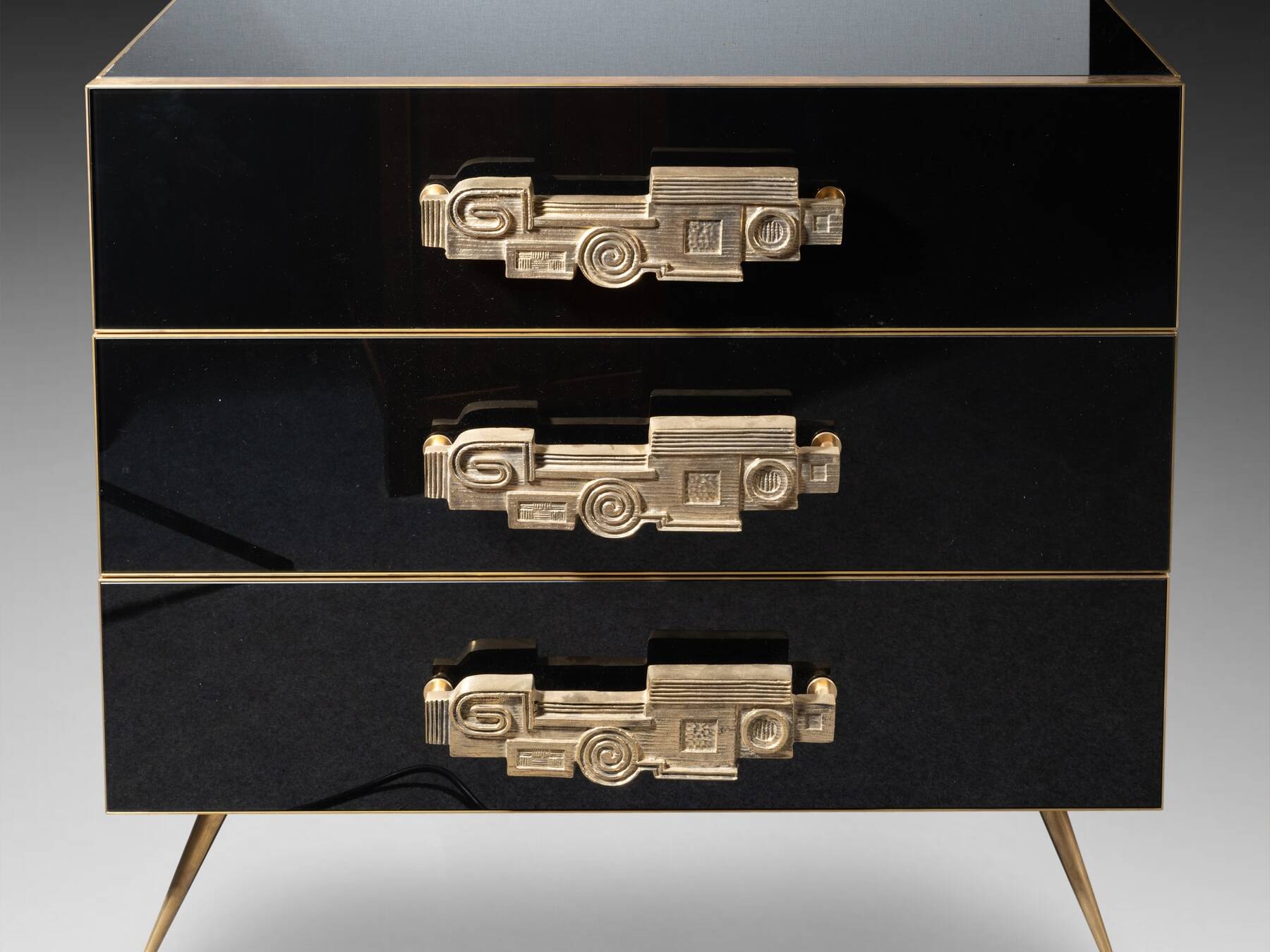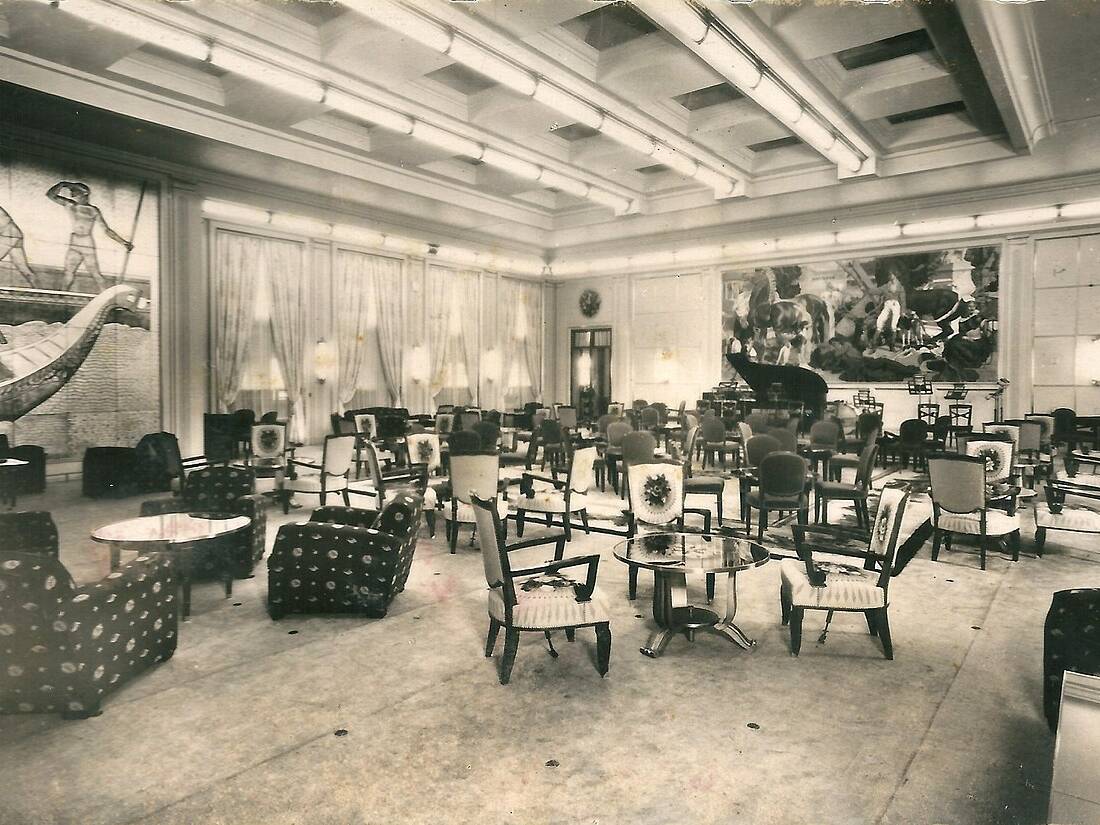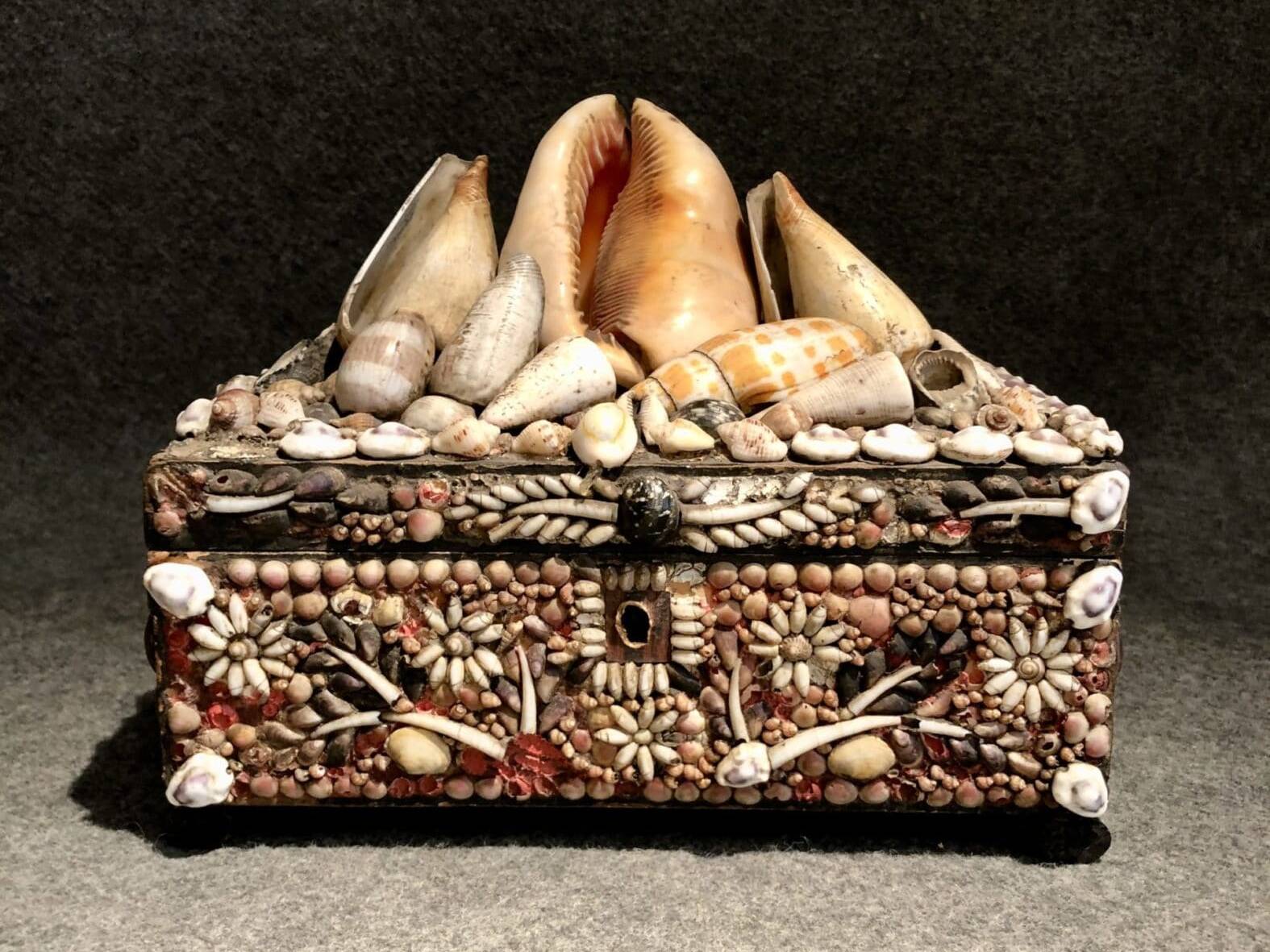Manfredo Massironi (1937 - 2011), optical art designer
Born in Padua, this Italian artist studied industrial design and architecture at the University Institute of Architecture in Venice. He graduated in 1959. This direct relationship with reality, materials and their implementation gave him the skills in mathematics and engineering that soon allowed him to create original work within a Western artistic movement.
Freshly graduated, Massironi was immersed in contemporary creation which then gave pride of place to kinetic art and optical art, movements which were taking on a new dimension in Europe. If research and initiatives had already anticipated the development of these artistic forms, these movements based on the study of optical illusions truly emerged at the beginning of the 1960s.

With the artists Edoardo Landi, Toni Costa, Ennio Chiggio and Alberto Biasi, Massironi founded Gruppo N in 1959, which distinguished itself by a scientific and rigorous approach to perceptive phenomena. It involved exploiting the weaknesses of the human eye to create illusions and optical effects capable of destabilizing perception. The novelty of this movement lies in the indispensable involvement of the spectator in the activation of perceptive phenomena: depending on where they stand, depending on how they look at the two-dimensional or three-dimensional work, the optical effect is not the same. Destabilization is the key word and paradoxically it is the eye that is primarily responsible for this imbalance. Here it is the gaze that is the driving force of the work, unlike kinetic art, where the work is set in motion by an energy, independently of the spectator’s gaze.
In 1964, an article published in Time Magazine described this new style in detail and named it Optical Art, defining it by the ability of a static work to give the impression of movement, by applying mathematical formulas and exploiting the physical phenomena of sight.
The Tyco Library, or Optical Art in Everyday Life
Like his peers, Manfredo Massironi uses simple geometric shapes in his works, the superposition, combination or grouping of which create illusions of space and movement. While many artists express these optical effects on canvas, Manfredo Massironi draws on his training in object design and architecture. This is how he imagines a bookcase shelf combining architectural volume with industrial design and optical art.
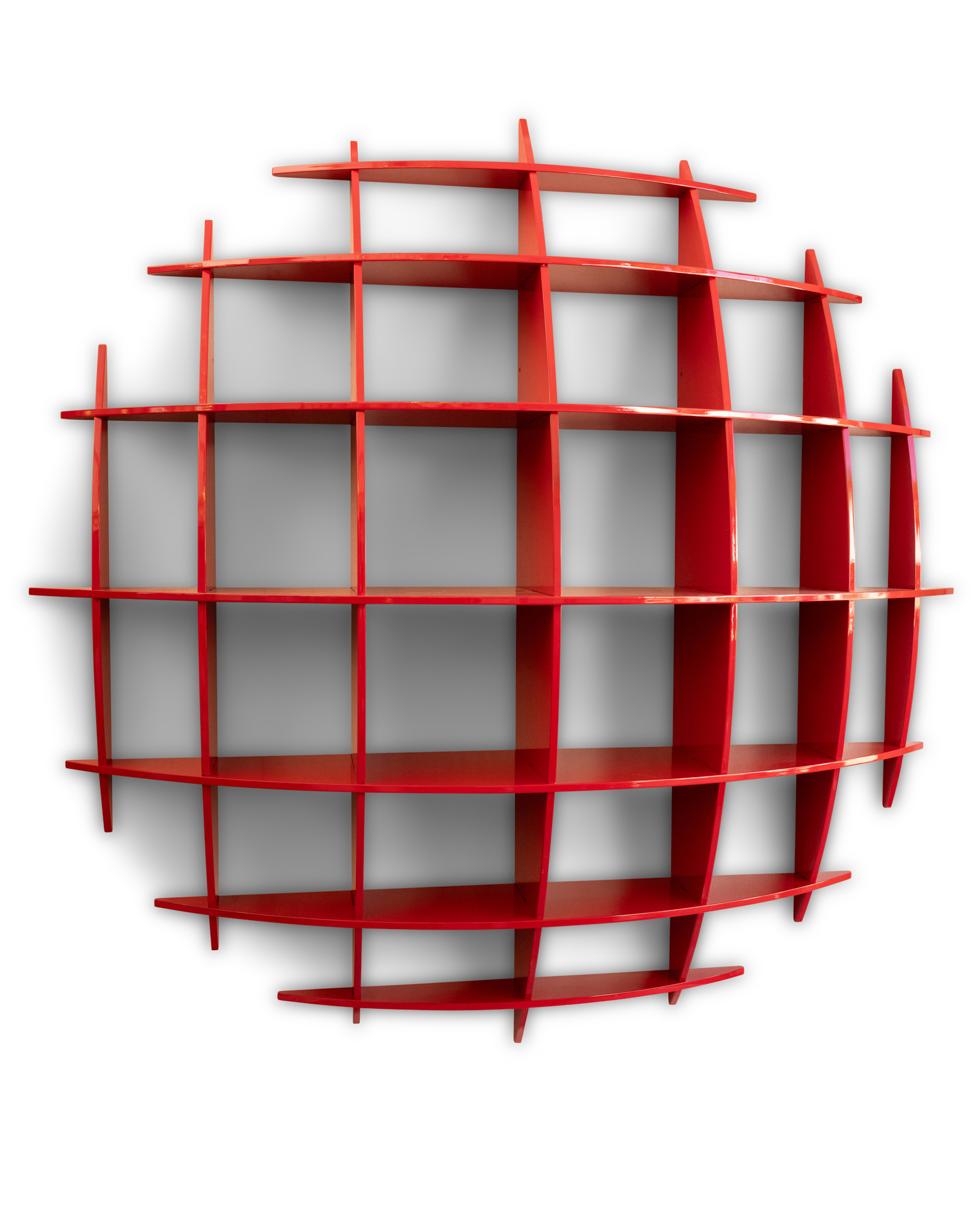
This fully interlocking wall shelf is designed as an assembly of lacquered wooden parts and meets the requirements of rationalized production. It was the 1970s and Massironi designed this piece of furniture for Nikol International.
Named Tyco, this library was an immediate success. Since the mid-1960s, the general public has been familiar with optical art. Playful, devoid of any meaning – something that many critics reproach it for -, optical art has invaded public space, from posters to fashion to decoration.
The Tyco furniture, however, breathes a little freshness by inviting the destabilizing three-dimensionality of Optical art into the very interior of the home. A rare piece of optical art furniture, this bookcase is not a gallery creation, but intends to offer a daily visual and artistic experience to its owner.
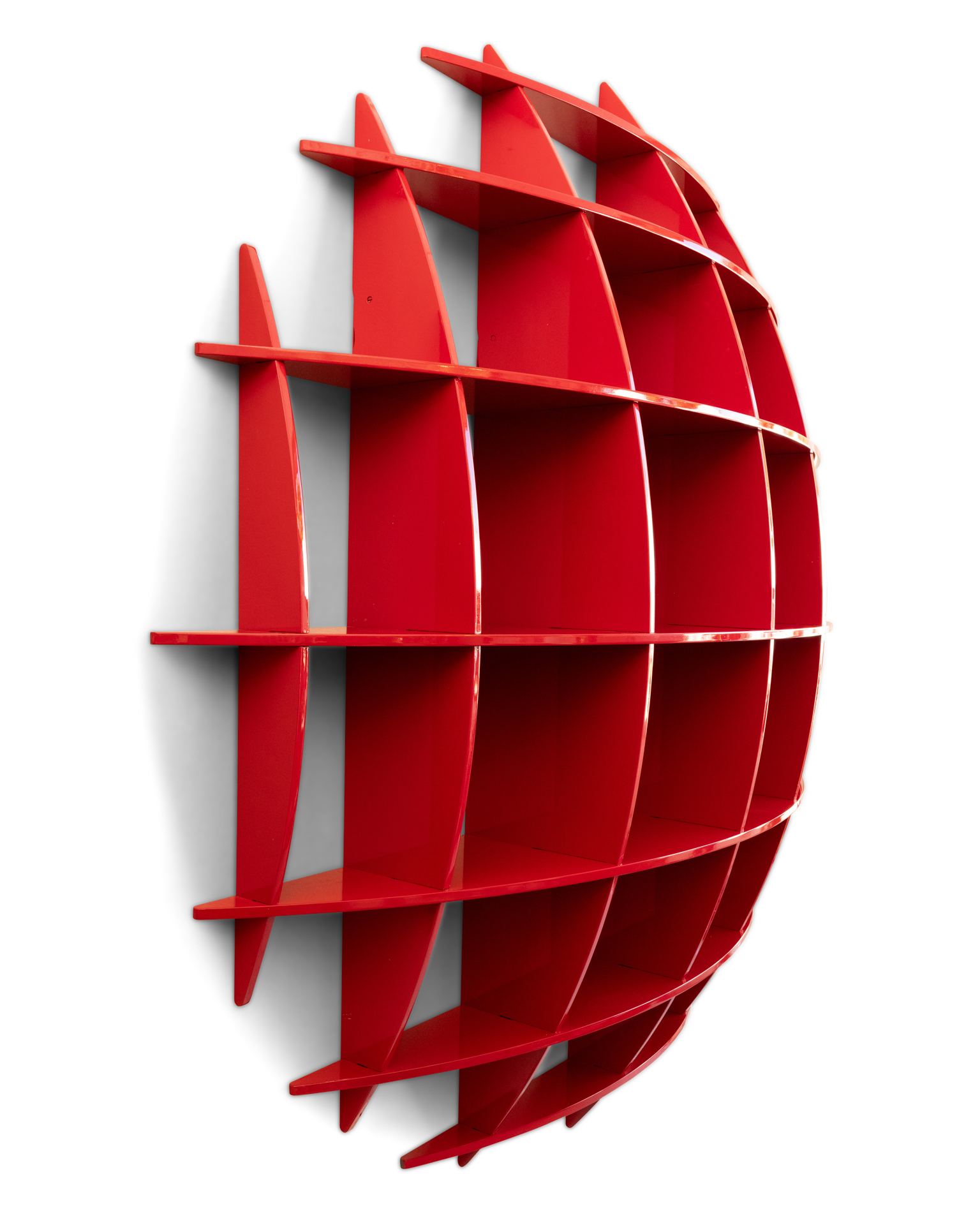
The structure is based on an ingenious assembly of straight and curved lines. While the straight sides of each assembly seat the piece of furniture in space, giving it the foundation and stability of an architecture, the curves invest the space in an expansion set in motion by the differences in depth of each shelf.
Like a bubble ready to burst or like a balloon that is being inflated, Tyco seems to invade the space and grow then shrink over the course of the day if it is placed in a room lit by natural light. This slow “breathing” is a collateral visual effect and more discreet than the more frontal one of this expanding sphere.
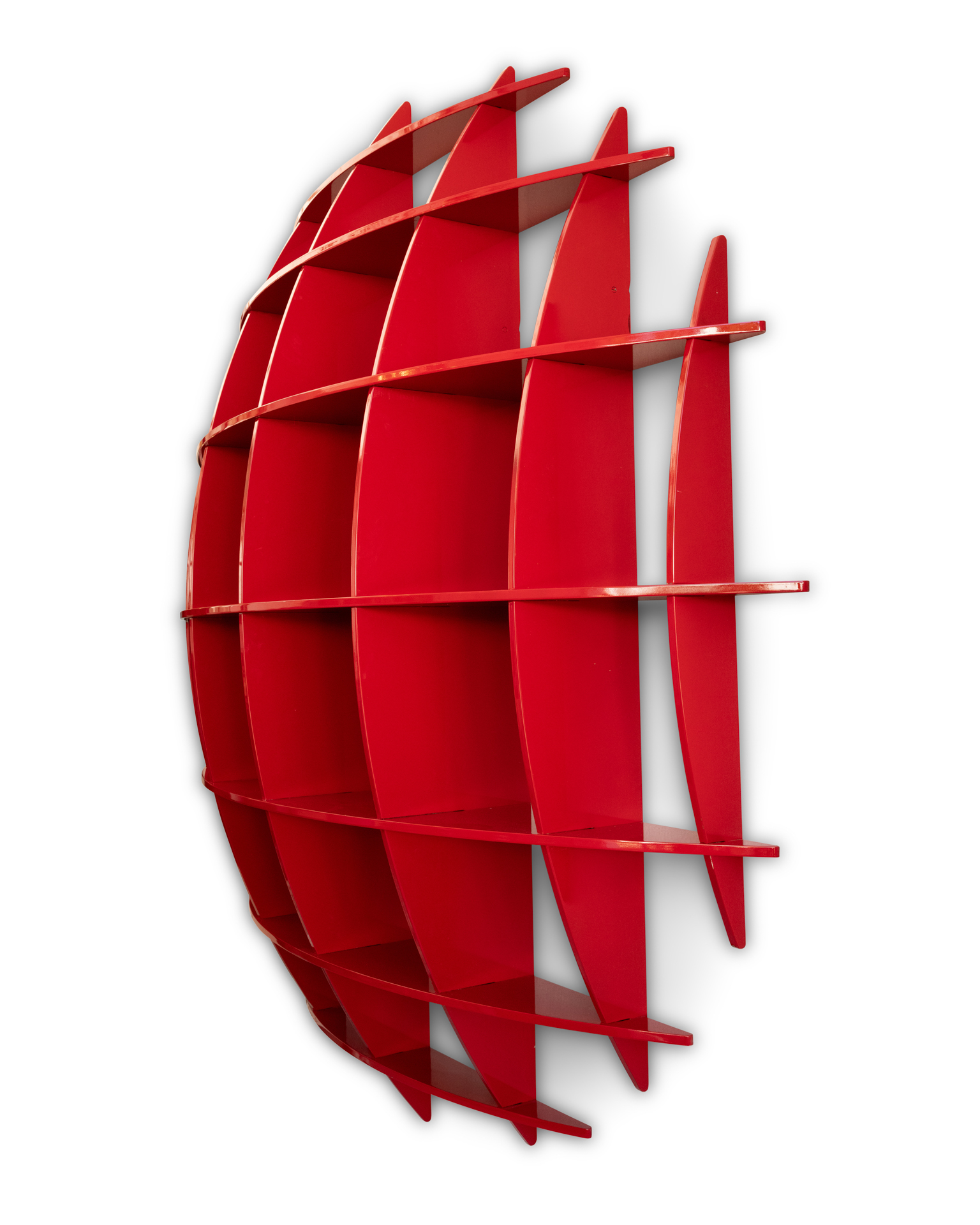
Optical art enjoyed a wide reception in the second half of the 20th century and was developed by several artists in several countries. In France, Sonia Delaunay experimented within this movement, notably for the decoration of the Matra 530 sports car.
However, the Tyco bookcase was one of the rare objects of Optical Art to have such posterity. Certainly, this piece of furniture is today an iconic piece of designer furniture of the last century.
Marielle Brie de Lagerac
Art historian for the art market and cultural media.
Author of the blog L’Art de l’Objet
Autres ressources et documentations
28 June 2025
Plaster Sculptures, Plaster Casts
For a long time, plaster casts suffered from a poor reputation. Often regarded as crude replicas, and sometimes even dismissed as inexpensive imitations, they nonetheless had…
17 April 2025
The Middle-Ages Furniture
Rare and highly sought-after, Middle-Ages furniture is making a strong comeback. An overview of this market, where enlisting the guidance of a professional is strongly advisable.
18 March 2025
Murano Glass Furniture
Since the beginning of the 20th century, Murano glassmakers have been exploring new horizons. After classic lighting and decorative art, Murano glass is now used to adorn…
16 December 2024
A bronze triton after the sculptures of François Girardon (1628 – 1715) in Versailles
This fountain element is all the more admirable as it is sculpted after the masterpieces of the Pyramid Basin, on the parterre of the North Wing of the Versailles gardens.
3 August 2024
The Ocean Liner Style
In the 20th century, the immense ocean liners connecting the Old Continent and the New World were ambassadors of tastes and innovations on both sides of the Atlantic.
15 July 2024
An 18th Century Shell Box
From the Regency to the death of Louis XV, the art of the shell was the center of all attention.
